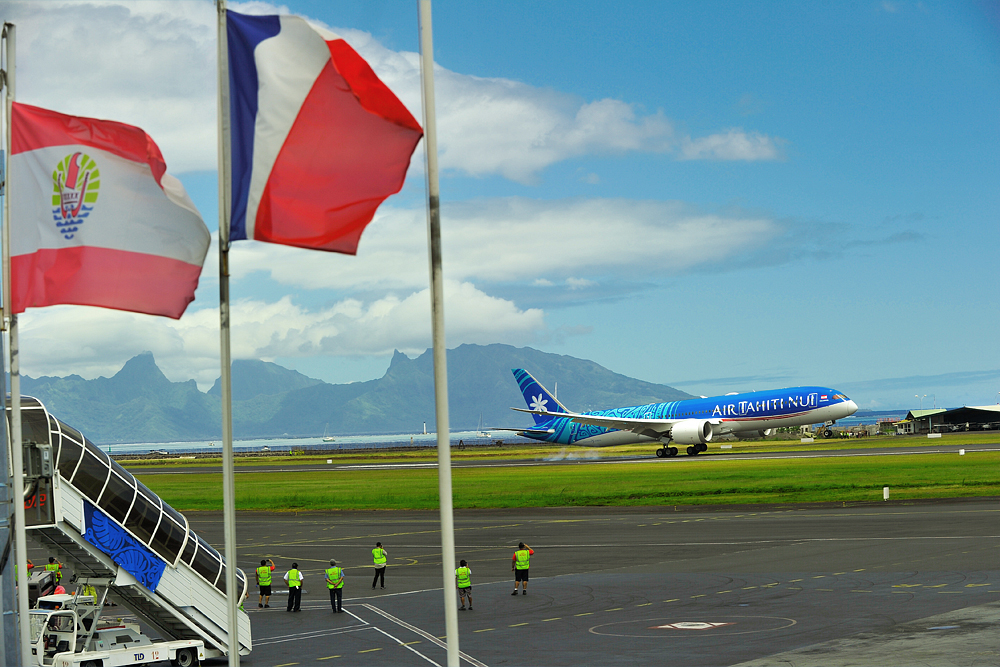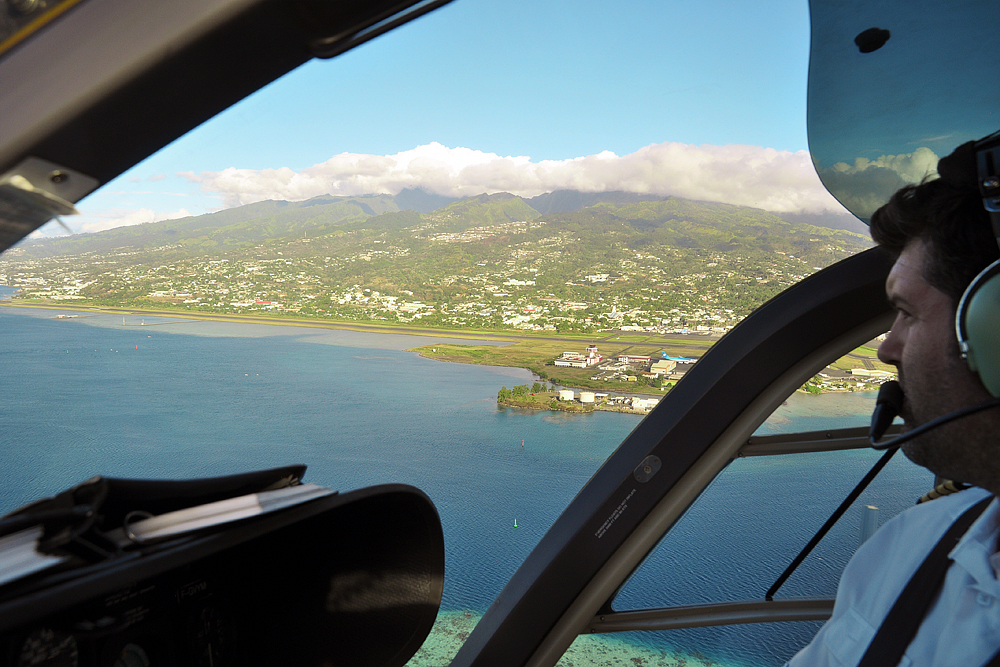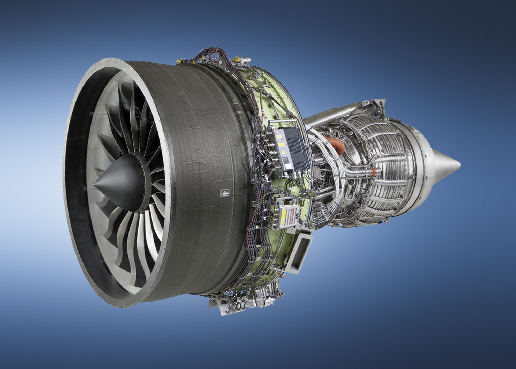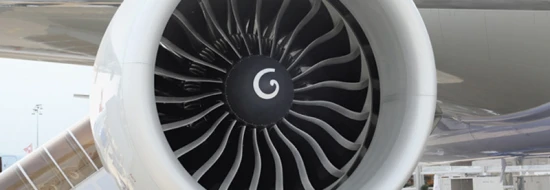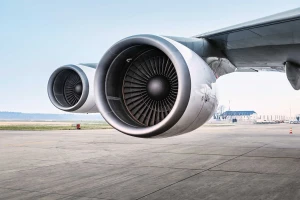aviation
Dreamliner to a dream destination: Tahiti in the South Pacific
In the endless South Pacific, 118 islands make up French Polynesia. Without air connections, life would be unthinkable for tourists and locals alike.
author: Andreas Spaeth | 5 mins reading time updated on: 03.07.2025
author:
Andreas Spaeth
has been traveling the world as a freelance aviation journalist for over 25 years, visiting and writing about airlines and airports. He is frequently invited to appear on radio and TV programs to discuss current events in the sector.
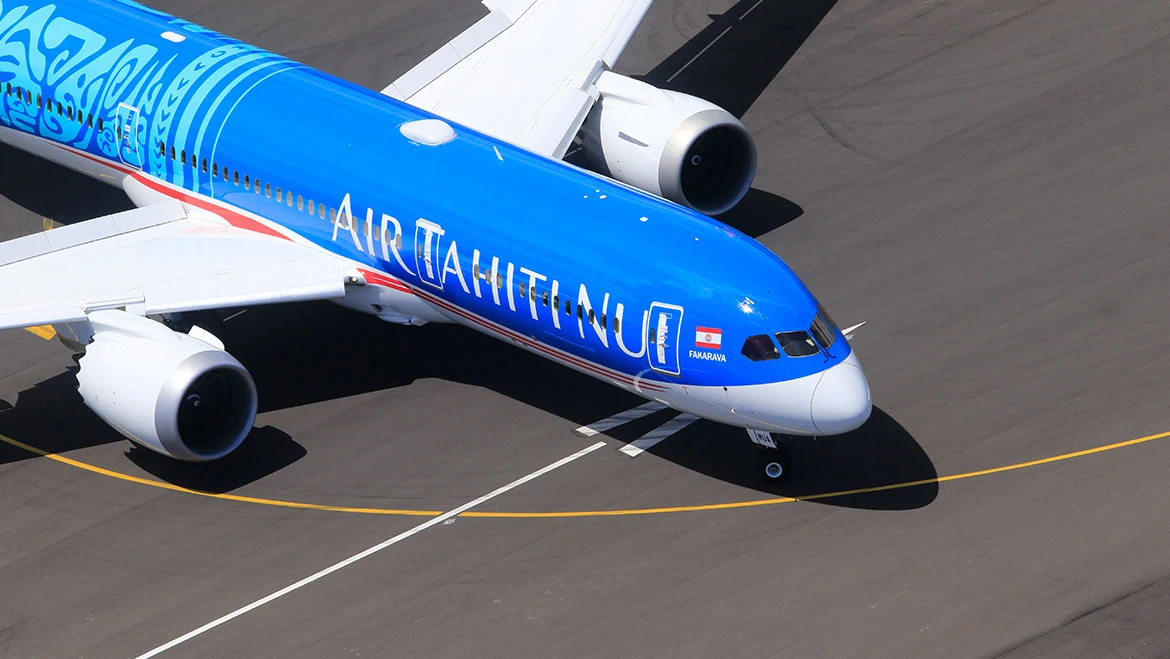
Once glance at the globe makes it clear that the magical island paradise of French Polynesia lies far out of reach of all major centers of civilization, somewhere in the endless blue of the South Pacific. Tahiti, the main island, and the entire French overseas territory, with its 283,000 inhabitants spread across 118 islands and atolls, owes its livelihood to visitors. But they are also prisoners of their remote location—flying to Los Angeles takes around eight hours; the nearest metropolis is Auckland in New Zealand, a five-hour flight away. No wonder, then, that all the islands together welcome only as many tourists each year as Hawaii, the U.S. state further to the north, sees in just one week.
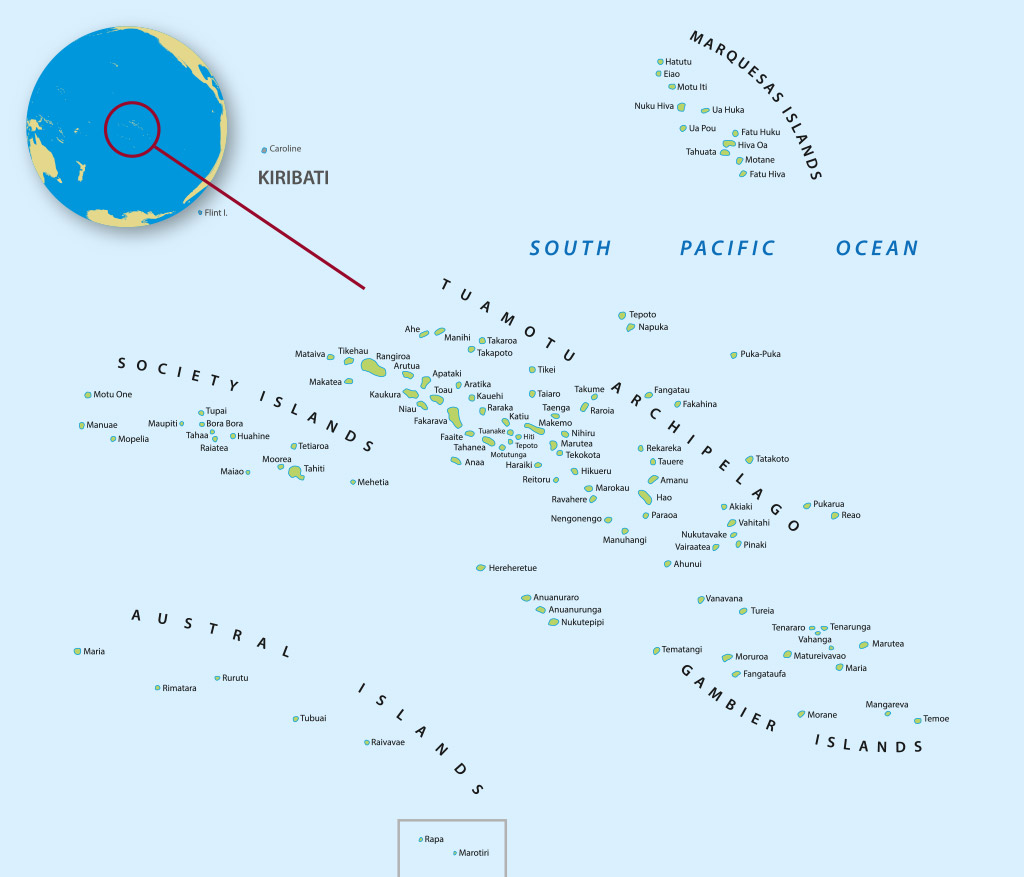
But French Polynesia could never survive without tourism; it has no other economic activity to speak of. This means that good air connections are essential—at all levels. Long-haul connections carry the stream of tourists from the mother country, France, a good 21 hours away, and from North America, which lies a little closer, to the palms of the Bora Bora atoll and the territory’s other island beauty spots. Inter-island air connections carry tourists to their destinations and gives locals access to the wider world.
The “big” Air Tahiti
Air Tahiti Nui is the national airline of French Polynesia; “Nui” means “big.” Founded in 1998, for many years it flew a fleet of Airbus A340-300 aircraft, which most recently numbered five. In mid-2019, however, the airline completely reinvented itself and now operates a fleet of four brand-new Boeing 787-9s in a newly designed livery that makes them a real eye-catcher wherever they appear. Their radiant shade of blue immediately brings to mind the turquoise waters of the South Pacific. Their tails sport the white tiaré flower, the national flower; each passenger receives a real one when they board. And the rear section of their fuselage is decorated with light-blue designs based on typical tattoos from the remote Marquesas islands, including stylized manta rays, albatross, fishhooks, ocean waves and tiki symbols from ancestor worship.
Extremely long and thin routes
“We wanted the Boeing 787-9 because it’s a perfect fit for our extremely long routes with medium passenger numbers,” says Air Tahiti Nui Managing Director Mathieu Bechonnet. And the island airline ultimately got its way despite considerable political pressure to consider its French heritage and buy the Airbus A350 or A330neo. What’s interesting is that almost all the other carriers serving Tahiti—LATAM, Air New Zealand and United Airlines—also do so with the 787, which really is perfect for such long, “thin” routes. Air France flies the Boeing 777-300ER there, while low-cost carrier French Bee has started services using the A350.
Air Tahiti Nui’s route network comprises just a handful of destinations: flights from its Papeete hub on Tahiti to Tokyo, Auckland, Los Angeles and Paris. The company’s growth is directly connected to the tourism industry. “We have no transferring passengers or sixth freedom passengers—guests we would carry from one foreign country to another with a stop in our home country. We are completely dependent on the destination and on the number of available hotel rooms. Recent hotel closures mean this number is now considerably smaller, which makes it hard for us to expand,” says Christopher Korenke, the German national who is Senior Vice President Commercial & Marketing for the airline. He adds that the most important thing is to ensure that they always offer enough capacity to serve Tahiti, since the number of other airlines serving the island fluctuates wildly.
New fleet increases efficiency
Tourists account for 80 percent of Air Tahiti Nui’s business. The company has been profitable for many years, and welcomes the efficiency gains that it has achieved by renewing its fleet. Air Tahiti Nui’s Dreamliners are powered by General Electric GEnx engines, in which MTU has a program share. Not only do they burn 23 percent less kerosene than the engines that power the A340-300, they also make the 787 markedly faster: the flight time to Paris has been reduced by a whole 90 minutes. “And the maintenance costs are an impressive 35 percent lower than for the A340,” states Executive Vice President Operations Raymond Topin. He is particularly happy that his new fleet is now also certified for ETOPS 225. This means it can opt for the shortest route between Los Angeles and Papeete, which saves another 15 minutes of flying time.
Most people traveling to Tahiti want to fly on to Bora Bora, the major resort island, a 50-minute flight from the capital city’s airport. To reach this unspoiled Pacific Island paradise, passengers climb aboard an ATR-72 operated by Air Tahiti, the regional carrier and lifeline for island transportation. Even though Air Tahiti’s 11 ATRs connect Papeete to 46 islands, the Bora Bora “run” accounts for almost one-fourth of its passengers, which recently totaled 826,000 (2018).
Island-hopping with legs of up to four hours
The main challenge the island airline must cope with is French Polynesia’s geographical extent. Some islands and atolls are almost four hours away from Papeete in a turboprop—roughly the distance from Paris to Stockholm. Meanwhile, the least frequented routes sometimes attract less than 300 passengers—in a year. As a majority private company, the regional airline receives no state subsidies, so it needs to find other ways to make ends meet. One way is through cross-subsidy, as Air Tahiti CEO Manate Vivish explains: “We get the tourists to help pay for the local services.”
Subsidiary: An offshoot of the island’s flag carrier, Tahiti Nui Helicopters provides scenic flights and inter-island transfers on modern Airbus helicopters.
Those who can afford it hire themselves an exclusive helicopter on Tahiti, neighboring Mo’orea or on Bora Bora. Air Tahiti Nui set up a subsidiary with Franco-Swiss market leader HBG especially to cater to this segment. Sightseeing flights taking in the lush rainforests cloaking Tahiti’s Mount Orohena, which rises to over 2,000 meters, or breathtaking aerial panoramas over the islands of Mo’orea and Bora Bora add a stunning new dimension to this island paradise.




